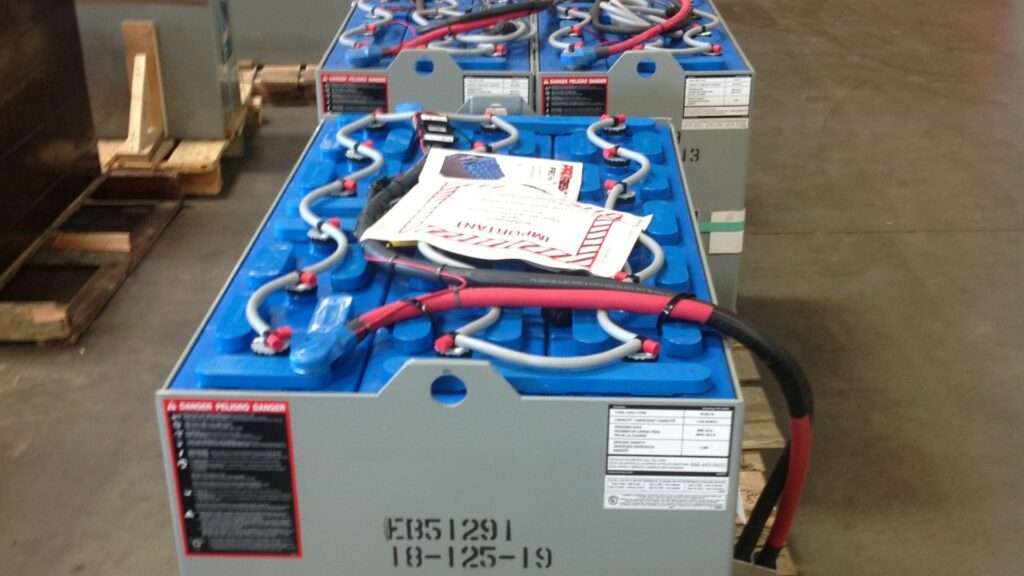If you are looking to learn the definitions of some key terms in energy, you are at the right place. Learn energy terms and definitions that will help you navigate the various concepts and terminology used in the world of energy. Starting with simpler terms and building in complexity, we will define for you the terms you need to know when discussing energy.
What is Energy?
Energy is a fundamental concept in physics that refers to the ability to do work or cause a change. It is a scalar physical quantity that is measured in joules (J) in the International System of Units (SI). Energy can exist in various forms, including kinetic energy (the energy of motion), potential energy (the energy stored in an object due to its position or configuration), thermal energy (the energy associated with the temperature of a system), and many others.
In general, energy can neither be created nor destroyed but can only be transformed from one form to another. This is known as the law of conservation of energy, which is a fundamental principle of physics. The different forms of energy are interconvertible, and energy can be transferred from one object to another or from one system to another.
What are the measurements of energy?
The SI unit for measuring energy is the joule (J), which is defined as the amount of work done when a force of one newton (N) acts over a distance of one meter (m). However, in practice, other units are also commonly used to measure energy, depending on the context. Some of the commonly used units of energy include:
- Kilowatt-hour (kWh): This is a unit of energy commonly used for measuring electricity consumption or production. One kilowatt-hour is equal to the amount of energy consumed by a 1,000-watt appliance that is used for one hour.
- Calorie (cal): This is a unit of energy commonly used in nutrition to measure the energy content of food. One calorie is defined as the amount of energy required to raise the temperature of one gram (g) of water by one degree Celsius (°C).
- British thermal unit (BTU): This is a unit of energy commonly used in the United States and other countries to measure the energy content of fuels such as natural gas and oil. One BTU is defined as the amount of energy required to raise the temperature of one pound (lb) of water by one degree Fahrenheit (°F).
- Electronvolt (eV): This is a unit of energy commonly used in atomic and nuclear physics to measure the energy of subatomic particles. One electronvolt is equal to the energy gained by an electron when it is accelerated through a potential difference of one volt.
What are the key forms of energy used in the United States?
The United States uses a variety of energy sources to meet its energy needs. The key forms of energy used in the United States include:
- Petroleum: Petroleum (oil) is the largest source of energy used in the United States. It is used for transportation, heating, and electricity generation.
- Natural gas: Natural gas is used for heating, electricity generation, and as a feedstock for the production of chemicals and fertilizers.
- Coal: Coal is used primarily for electricity generation.
- Nuclear energy: Nuclear energy is used for electricity generation.
- Renewables: Renewables such as wind, solar, hydroelectric, and biomass are becoming an increasingly important source of energy in the United States. They are used for electricity generation, heating, and transportation.
- Electricity: Electricity is not a primary energy source, but it is a key form of energy used in the United States. It is generated from a variety of sources, including fossil fuels, nuclear energy, and renewables.
The mix of energy sources used in the United States is changing over time, as the country seeks to reduce its dependence on fossil fuels and increase its use of renewable energy sources.
What is the definition of a kW?
kW stands for kilowatt, which is a unit of power in the International System of Units (SI). One kilowatt is equal to 1,000 watts. It is often used to measure the rate at which energy is generated or consumed, such as the power output of an electric motor or the power consumption of a household appliance. For example, a 1.5 kW electric kettle uses 1.5 kilowatts of power when it is operating at maximum capacity. To help visualize the concept, think of the pressure and diameter of water coming out of the of a hose.

What is the definition of kWh?
kWh stands for kilowatt-hour, which is a unit of energy commonly used for measuring electricity consumption or production. One kilowatt-hour is equal to the amount of energy consumed by a 1,000-watt appliance that is used for one hour. It is a commonly used unit for measuring household electricity usage, as well as energy production from renewable sources such as solar panels or wind turbines. For example, if a 100-watt light bulb is left on for 10 hours, it will consume 1 kilowatt-hour of energy (100 watts x 10 hours = 1,000 watt-hours = 1 kilowatt-hour). To help visualize the concept, think of the amount of water in a bucket collected over an hour of flow from the end of the hose.

What is the energy unit for electricity when it is sold?
The energy unit for electricity when it is sold to consumers is typically measured in kilowatt-hours (kWh). A kilowatt-hour is a unit of energy that represents the amount of energy consumed by an electrical device that uses 1 kilowatt of power for a period of 1 hour.
The utility company that provides the electricity measures the amount of energy consumed by a customer’s electrical device over a certain period of time and bills them based on the amount of energy consumed, measured in kilowatt-hours. The cost of electricity is usually expressed in terms of a cost per kilowatt-hour (e.g. cents per kWh) and varies depending on factors such as the time of day, the location, and the rate plan chosen by the customer.
How do you calculate kWh?
The unit kWh (kilowatt-hour) is a measure of energy, which is the amount of work that can be done by a given amount of power over a period of time. The formula to calculate energy (E) in kWh is:
E(kWh) = P(kW) x t(hr)
where P is the power in kW (kilowatts) and t is the time in hours.
For example, if you know that a 1 kW heater was used for 3 hours, you can calculate the energy used in kWh as:
E(kWh) = 1 kW x 3 hr = 3 kWh
So the energy used by the heater is 3 kWh.
Note that if you know the power in watts instead of kilowatts, you need to convert it to kilowatts by dividing by 1000 before using the above formula.
What types of energy can be used to power a car?
There are several types of energy that can be used to power a car, including:
- Gasoline or diesel: Most cars in the United States currently run on gasoline or diesel fuel. These fuels are burned in an internal combustion engine to generate mechanical energy that propels the car.
- Electricity: Electric cars use batteries to store electrical energy that is used to power an electric motor. The batteries are charged by plugging the car into an electric power source, such as a wall outlet or a charging station.
- Hydrogen: Fuel cell cars use hydrogen gas to generate electricity that powers an electric motor. The hydrogen gas is stored in a tank and combines with oxygen from the air to produce electricity, with water as the only byproduct.
- Biofuels: Biofuels such as ethanol and biodiesel can be used in internal combustion engines to power cars. These fuels are derived from renewable sources such as corn, soybeans, and sugarcane.
- Natural gas: Compressed natural gas (CNG) and liquefied natural gas (LNG) can be used to power cars equipped with natural gas engines. Natural gas is a cleaner-burning fuel than gasoline or diesel, and it is often used in fleet vehicles such as buses and taxis.
The choice of energy source for a car depends on a variety of factors, including cost, availability, performance, and environmental impact.
What types of energy can be used to power a forklift?
Forklifts are commonly used in warehouses, manufacturing facilities, and other industrial settings to move heavy loads. There are several types of energy that can be used to power a forklift, including:
- Battery electric: Electric forklifts are powered by batteries that are charged by plugging the forklift into an electrical outlet. They are quiet, emit no exhaust fumes, and require minimal maintenance. Battery electric forklifts are ideal for indoor use in environments where air quality is a concern.
- Internal combustion: Internal combustion forklifts can be powered by gasoline, diesel fuel, or propane. These forklifts are often used in outdoor settings where they can operate over longer distances and lift heavier loads. Internal combustion forklifts are generally more powerful than electric forklifts, but they produce exhaust fumes and require more maintenance.
- Hydrogen Fuel cell: Fuel cell forklifts use hydrogen gas to generate electricity that powers an electric motor. They emit only water vapor as a byproduct, making them an environmentally friendly option. Fuel cell forklifts are still relatively rare and expensive, but they are gaining popularity in some industrial settings.
The choice of energy source for a forklift depends on a variety of factors, including the specific application, the operating environment, and the operator’s preferences. Each type of forklift has its own advantages and disadvantages, and the best choice depends on the needs of the business.
What is the least expensive fuel for forklifts?
The least expensive fuel for forklifts can vary depending on a number of factors, including the location, availability of fuel sources, and the specific forklift model. Generally, propane is considered to be the least expensive fuel option for forklifts in many regions. Propane is a byproduct of natural gas processing and petroleum refining, and it is widely available throughout the United States. Propane-powered forklifts are also generally less expensive to maintain than diesel or gasoline forklifts, and they emit lower levels of pollutants. However, the availability and cost of fuel sources can vary depending on the location and other factors, so it’s always a good idea to evaluate the specific fuel options and costs in your region before making a decision.
Additionally, you will want to look at the labor of cost of exchanging propane tanks mid-shift. The loss of labor productivity during a tank change should be included in the calculations of how much propane costs a business as a motive fuel.
How do you measure the energy in a battery?
The energy stored in a battery can be measured in terms of its capacity, which is usually expressed in ampere-hours (Ah) or kilowatt-hours (kWh). The capacity of a battery represents the amount of electrical energy that can be stored and then released by the battery.
To measure the energy stored in a battery, you need to know the battery’s capacity and its state of charge. The state of charge is a measure of how much energy is currently stored in the battery, expressed as a percentage of the battery’s capacity.
One way to measure the energy stored in a battery is to use a battery tester or analyzer, which can measure the battery’s voltage and current output under load conditions and then calculate the battery’s capacity and state of charge. Another way is to use a multimeter to measure the battery’s voltage and then use a battery capacity calculator or chart to estimate the battery’s capacity and state of charge based on the voltage reading.
It is important to note that the energy stored in a battery is not a fixed value and can vary depending on factors such as the battery’s age, temperature, and usage patterns. Therefore, it is important to periodically test and maintain the battery to ensure that it is operating at its full capacity and to monitor its state of charge to avoid overcharging or deep discharging, which can reduce the battery’s lifespan.
How do you calculate the kWh in a battery?

To calculate the kWh (kilowatt-hours) of a battery, you need to know its capacity in amp-hours (Ah) and its voltage.
The formula to calculate energy (E) in kWh from capacity (C) in Ah and voltage (V) is:
E(kWh) = C(Ah) x V(Volts) / 1000
where the division by 1000 is necessary to convert watt-hours to kilowatt-hours.
For example, if you have a battery with a capacity of 100 Ah and a voltage of 12 volts, you can calculate the energy in kWh as:
E(kWh) = 1000 Ah x 36 V / 1000 = 36 kWh
So the battery has an energy storage capacity of 36 kWh.
Note that this formula gives you the total energy capacity of the battery, and the amount of usable energy may be lower due to factors such as the battery’s depth of discharge and efficiency.
What is the difference between voltage and amperage?

Voltage and amperage are both fundamental concepts in electricity, but they represent different aspects of an electrical circuit.
Voltage is a measure of the electrical potential energy per unit charge in a circuit. It is the force or pressure that drives electric charge to flow in a circuit. In other words, voltage is the difference in electrical potential between two points in a circuit. Voltage is measured in volts (V).
Amperage, on the other hand, is a measure of the flow rate of electric charge through a conductor in an electrical circuit. It is the amount of electrical charge that passes through a circuit per unit of time. Amperage is measured in amperes (A).
In summary, voltage is the driving force that causes the electrical charge to flow, while amperage is the rate at which the charge flows. Voltage is like the pressure that drives water through a hose, while amperage is like the amount of water that flows through the hose. Both voltage and amperage are important for understanding and designing electrical circuits, and they are related by Ohm’s law, which describes the relationship between voltage, amperage, and resistance in a circuit.
What is the depth of discharge for a lead acid battery?
The depth of discharge (DoD) is a term used to describe the percentage of a battery’s total capacity that has been discharged or used during its cycle. It is a measure of how much energy has been withdrawn from the battery compared to its total capacity.
The depth of discharge (DoD) for a lead-acid battery typically depends on the type of lead-acid battery and its intended use. However, in general, the recommended maximum depth of discharge for lead-acid batteries is around 50% to 80% of the total capacity of the battery.
If a lead-acid battery is discharged beyond this recommended level, it can result in reduced battery life and performance. For example, deep discharging a lead-acid battery can cause sulfation of the battery plates, which can reduce its capacity and lifespan.
To maximize the lifespan and performance of a lead-acid battery, it is important to avoid deep discharging whenever possible and to recharge the battery before it reaches a low state of charge. Regular maintenance, such as checking the electrolyte levels and keeping the battery clean, can also help extend the life of a lead-acid battery.
What is the depth of discharge for a lithium ion battery?
The depth of discharge (DoD) for a lithium-ion battery depends on several factors, including the battery chemistry, the design of the battery, and its intended use. However, in general, lithium-ion batteries can be discharged to a lower depth of discharge than lead-acid batteries without significant negative effects on their lifespan.
Most manufacturers recommend a maximum depth of discharge of 80% for lithium-ion batteries to balance the battery lifespan and capacity. Discharging beyond this level can shorten the lifespan of the battery and reduce its overall capacity.
Some high-performance lithium-ion batteries can be discharged to a deeper level of discharge, up to 90% or even 100% in some cases, but this can result in a shorter lifespan and reduced capacity over time.
It is worth noting that lithium-ion batteries have built-in protection circuits that prevent over-discharging and over-charging, which helps to prevent damage to the battery and ensure safe operation. Regular charging and discharging of lithium-ion batteries within the recommended depth of discharge range can help to maintain the battery’s performance and extend its lifespan.





